Forums
- Forums
- Duggy's Reference Hangar
- USAAF / USN Library
- Douglas C-124 Globemaster II
Douglas C-124 Globemaster II
Post a reply
- Go to Previous topic
- Go to Next topic
- Go to Welcome
- Go to Introduce Yourself
- Go to General Discussion
- Go to Screenshots, Images and Videos
- Go to Off topic
- Go to Works in Progress
- Go to Skinning Tips / Tutorials
- Go to Skin Requests
- Go to IJAAF Library
- Go to Luftwaffe Library
- Go to RAF Library
- Go to USAAF / USN Library
- Go to Misc Library
- Go to The Ops Room
- Go to Made in Germany
- Go to Campaigns and Missions
- Go to Works in Progress
- Go to Juri's Air-Raid Shelter
- Go to Campaigns and Missions
- Go to Works in Progress
- Go to Skinpacks
- Go to External Projects Discussion
- Go to Books & Resources
-
2 years agoMon Dec 25 2023, 01:12pmDuggy
 Main AdminThe Douglas C-124 Globemaster II, nicknamed "Old Shaky", is an American heavy-lift cargo aircraft built by the Douglas Aircraft Company in Long Beach, California.
Main AdminThe Douglas C-124 Globemaster II, nicknamed "Old Shaky", is an American heavy-lift cargo aircraft built by the Douglas Aircraft Company in Long Beach, California.
The C-124 was the primary heavy-lift transport for United States Air Force (USAF) Military Air Transport Service (MATS) during the 1950s and early 1960s, until the Lockheed C-141 Starlifter entered service. It served in MATS, later Military Airlift Command (MAC), units of the Air Force Reserve and Air National Guard until retired in 1974.
Design and development
Douglas Aircraft developed the C-124 from 1947 to 1949, from a prototype they created from a World War II–design Douglas C-74 Globemaster, and based on lessons learned during the Berlin Airlift. The aircraft was powered by four large Pratt & Whitney R-4360 Wasp Major piston engines producing 3,800 hp (2,800 kW) each. The C-124's design featured two large clamshell doors and a hydraulically actuated ramp in the nose as well as a cargo elevator under the aft fuselage. The C-124 was capable of carrying 68,500 lb (31,100 kg) of cargo, and the 77 ft (23 m) cargo bay featured two overhead hoists, each capable of lifting 8,000 lb (3,600 kg). As a cargo hauler, it could carry tanks, guns, trucks and other heavy equipment, while in its passenger-carrying role it could carry 200 fully equipped troops on its double decks or 127 litter patients and their attendants. It was the only aircraft of its time capable of transporting fully assembled heavy equipment such as tanks and bulldozers.
The C-124 first flew on 27 November 1949, with the C-124A being delivered from May 1950. The C-124C was next, featuring more powerful engines, and an APS-42 weather radar fitted in a "thimble"-like structure on the nose. Wingtip-mounted combustion heaters were added to heat the cabin, and enable wing and tail surface deicing. The C-124As were later equipped with these improvements.
One C-124C, 52-1069, c/n 43978, was used as a JC-124C, for testing the 15,000 shp (11,000 kW) Pratt & Whitney XT57 (PT5) turboprop, which was installed in the nose.
Operational history
First deliveries of the 448 production aircraft began in May 1950 and continued until 1955. The C-124 was operational during the Korean War, and was also used to assist supply operations for Operation Deep Freeze in Antarctica. They performed heavy lift cargo operations for the U.S. military worldwide, including flights to Southeast Asia, Africa and elsewhere. From 1959 to 1961 they transported Thor missiles across the Atlantic to England. The C-124 was also used extensively during the Vietnam War transporting materiel from the U.S. to Vietnam. Until the C-5A became operational, the C-124, and its sister C-133 Cargomaster were the only aircraft available that could transport very large loads.
The United States Air Force's Strategic Air Command (SAC) was the initial operator of the C-124 Globemaster, with 50 in service from 1950 through 1962. Four squadrons operated the type, consisting of the 1st, 2nd, 3rd and 4th Strategic Support Squadrons. Their primary duty was to transport nuclear weapons between air bases and to provide airlift of SAC personnel and equipment during exercises and overseas deployments.
The Military Air Transport Service (MATS) was the primary operator until January 1966, when the organization was retitled Military Airlift Command (MAC). Within a few years following the formation of MAC, the last remaining examples of the C-124 were transferred to the Air Force Reserve (AFRES) and the Air National Guard (ANG), said transfers being complete by 1970. The first ANG unit to receive the C-124C, the 165th Tactical Airlift Group (now known as the 165th Airlift Wing) of the Georgia Air National Guard, was the last Air Force unit to retire their aircraft (AF Serial No. 52-1066 and 53-0044) in September 1974.
Variants
YC-124
Prototype rebuilt from a C-74 with a new fuselage and powered by four 3,500 hp R-4360-39 engines, it was later re-engined and redesignated YC-124A.
YC-124A
Prototype YC-124 re-engined with four 3,800 hp R-4360-35A engines.
C-124A
Douglas Model 1129A, production version with four 3,500 hp R-4360-20WA engines; 204 built, most retrofitted later with nose-radar and combustion heaters in wingtip fairings.
YC-124B
Douglas Model 1182E was a turboprop variant of the C-124A with four Pratt & Whitney YT34-P-6 turboprops; originally proposed as a tanker, it was used for trials on the operation of turboprop aircraft. Originally designated C-127.
C-124C
Douglas Model 1317, same as C-124A but with four 3,800 hp R-4360-63A engines, nose radar, wingtip combustion heaters and increased fuel capacity; 243 built.
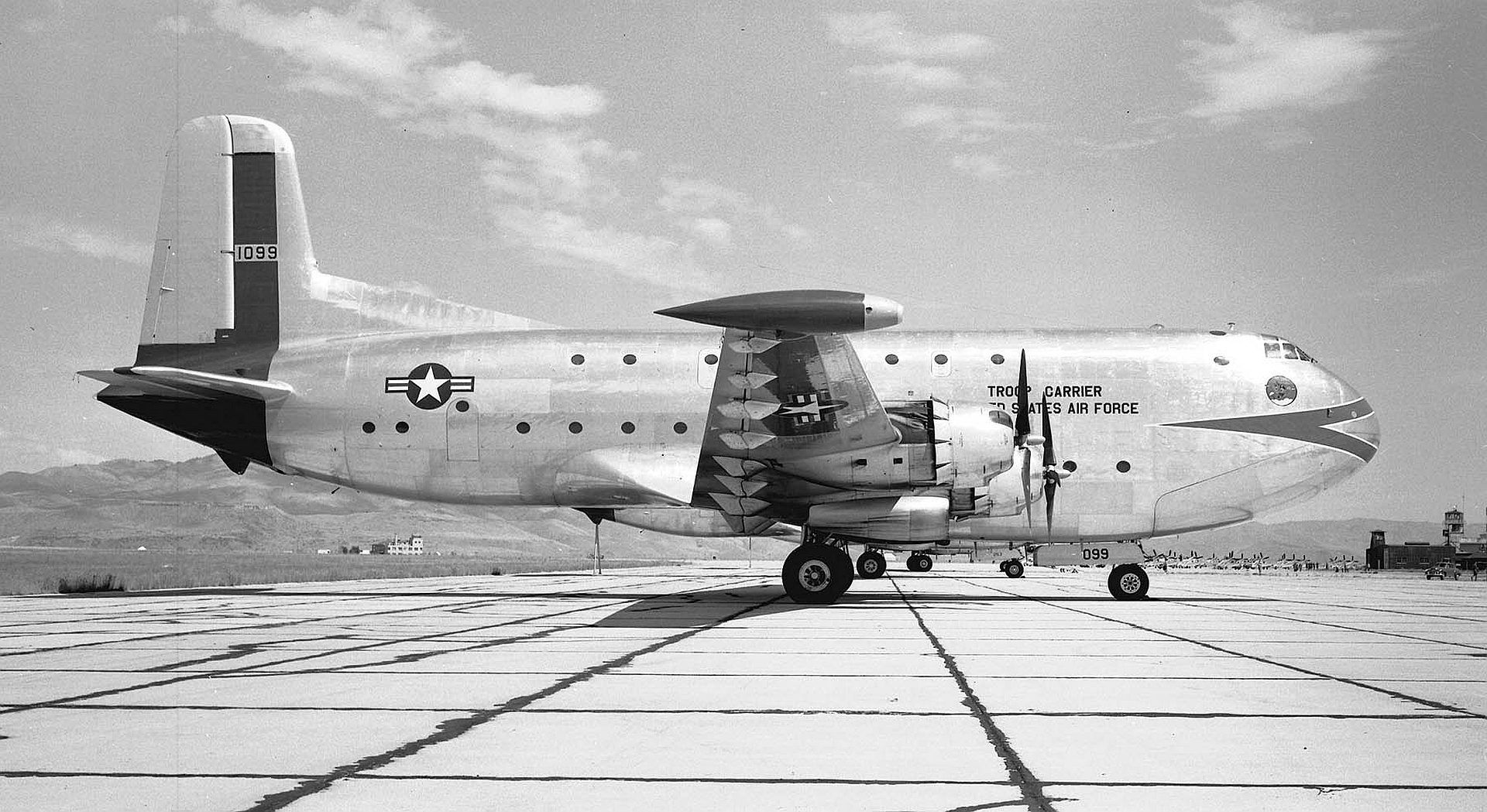
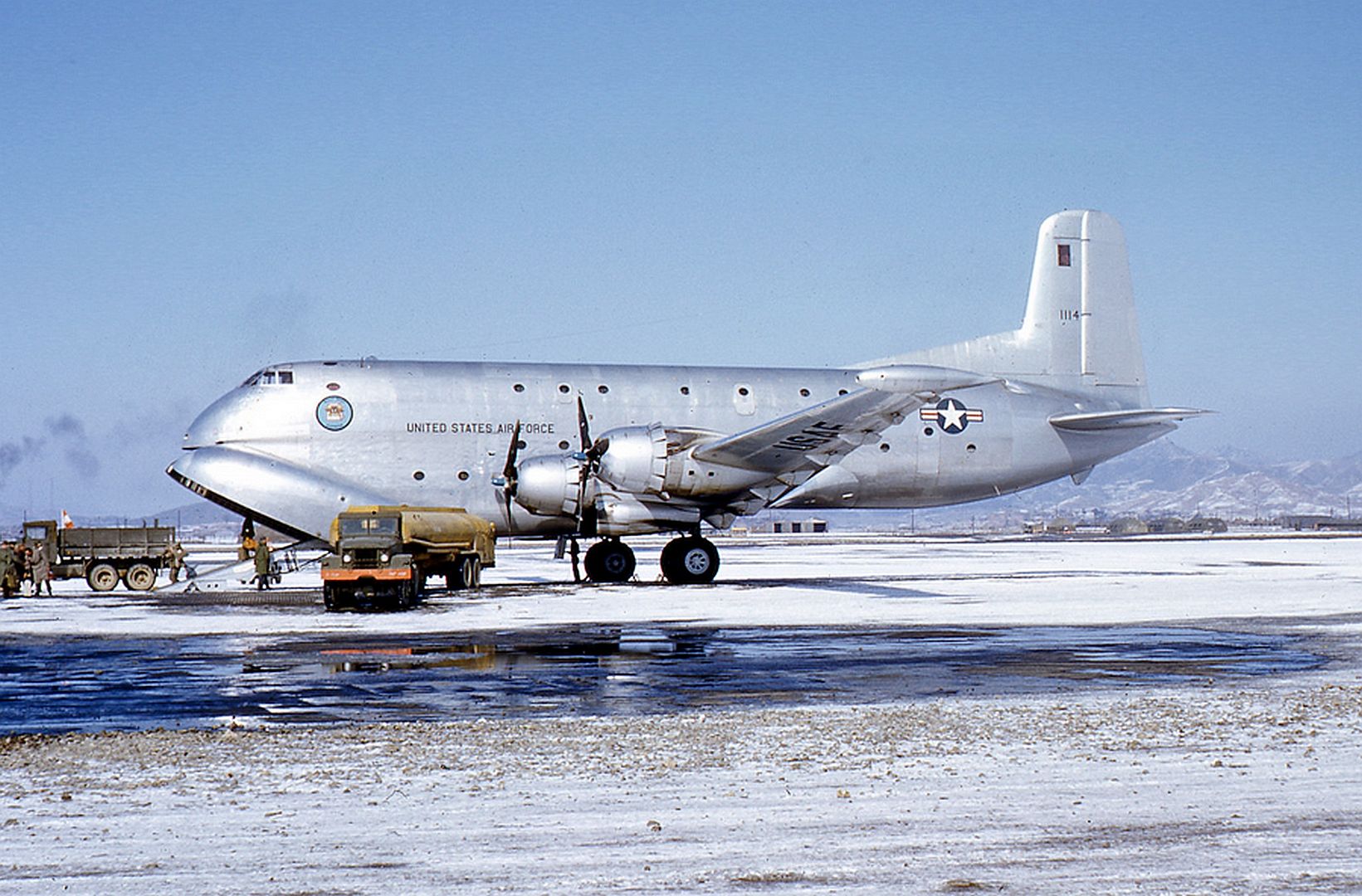

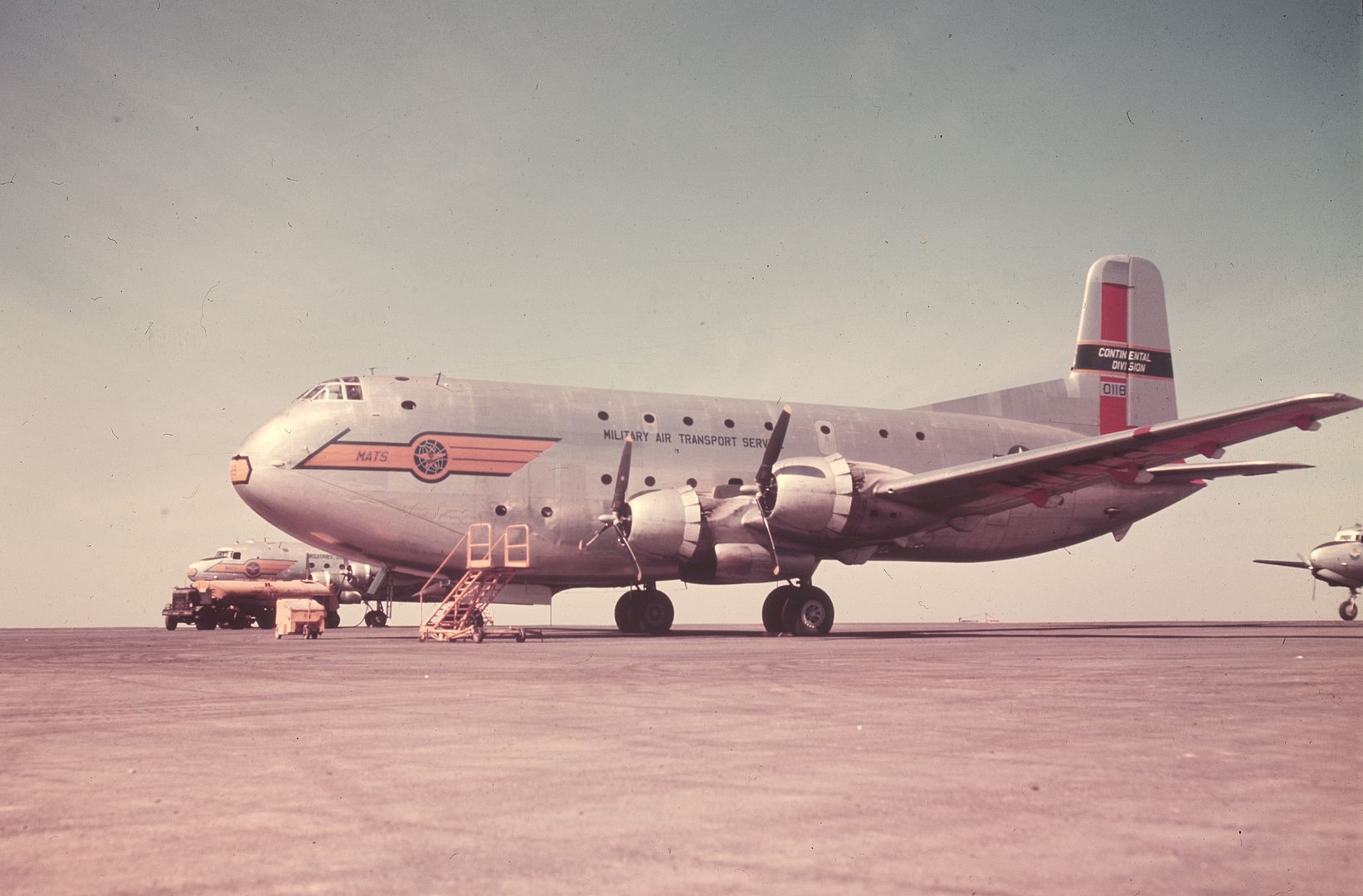
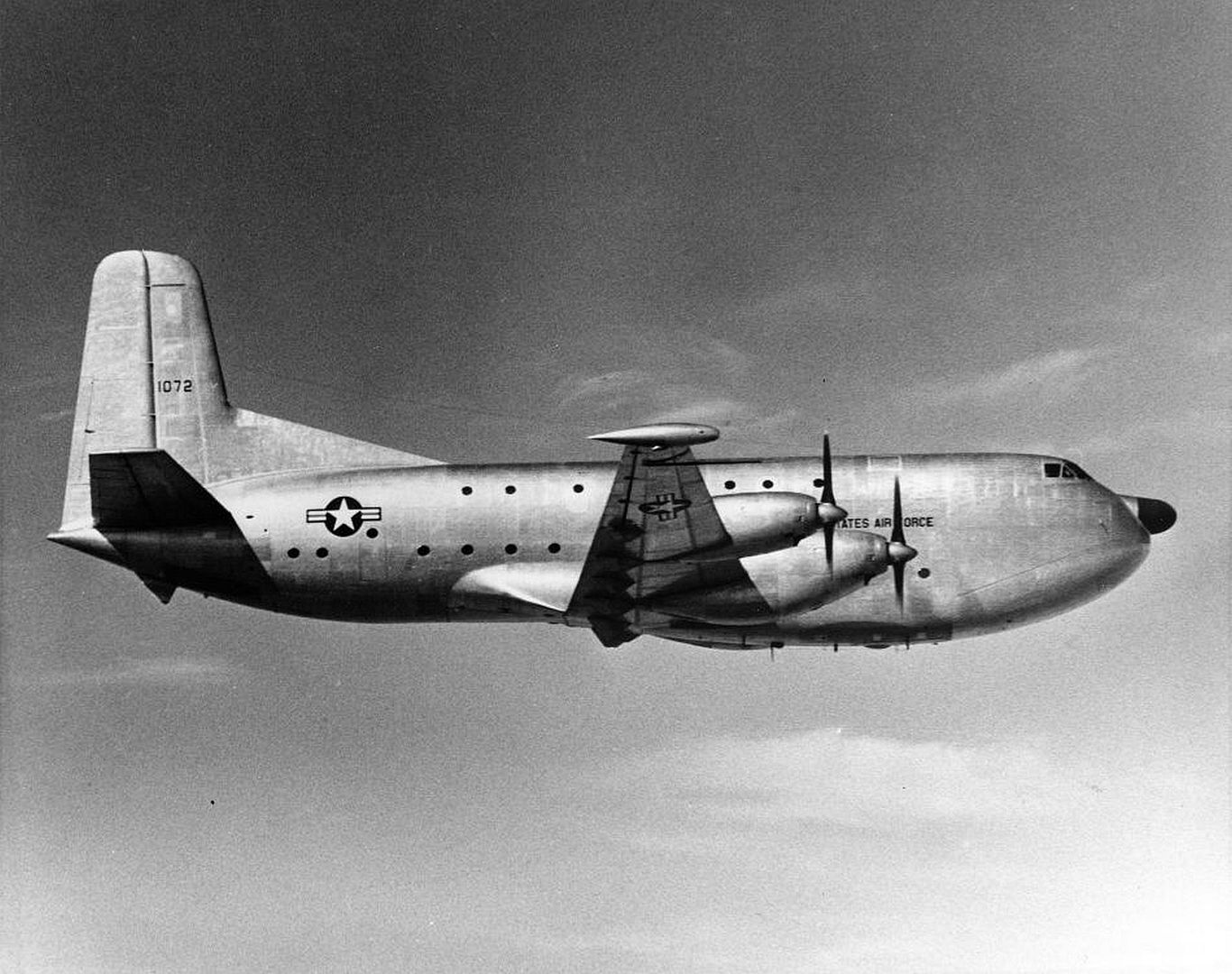
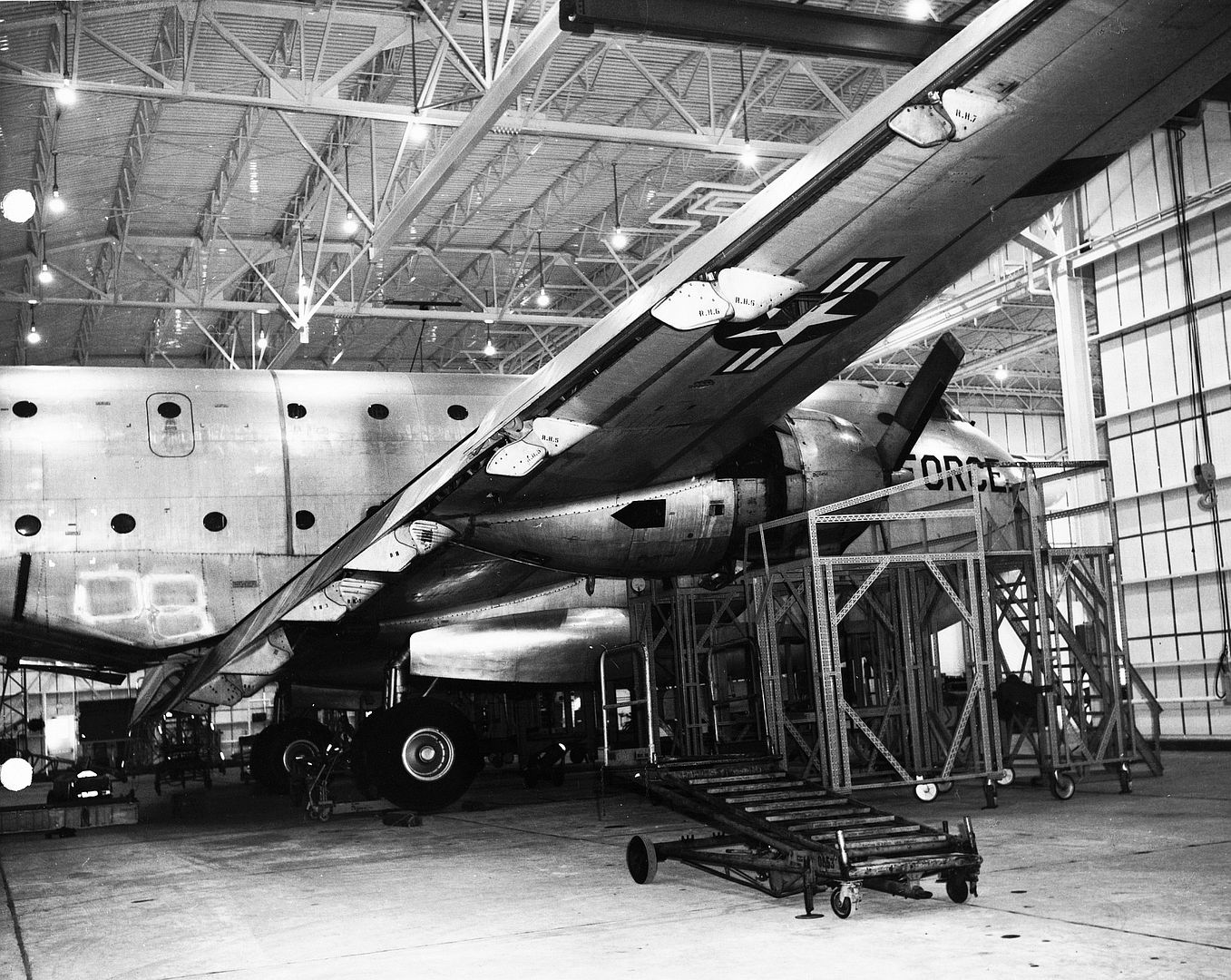
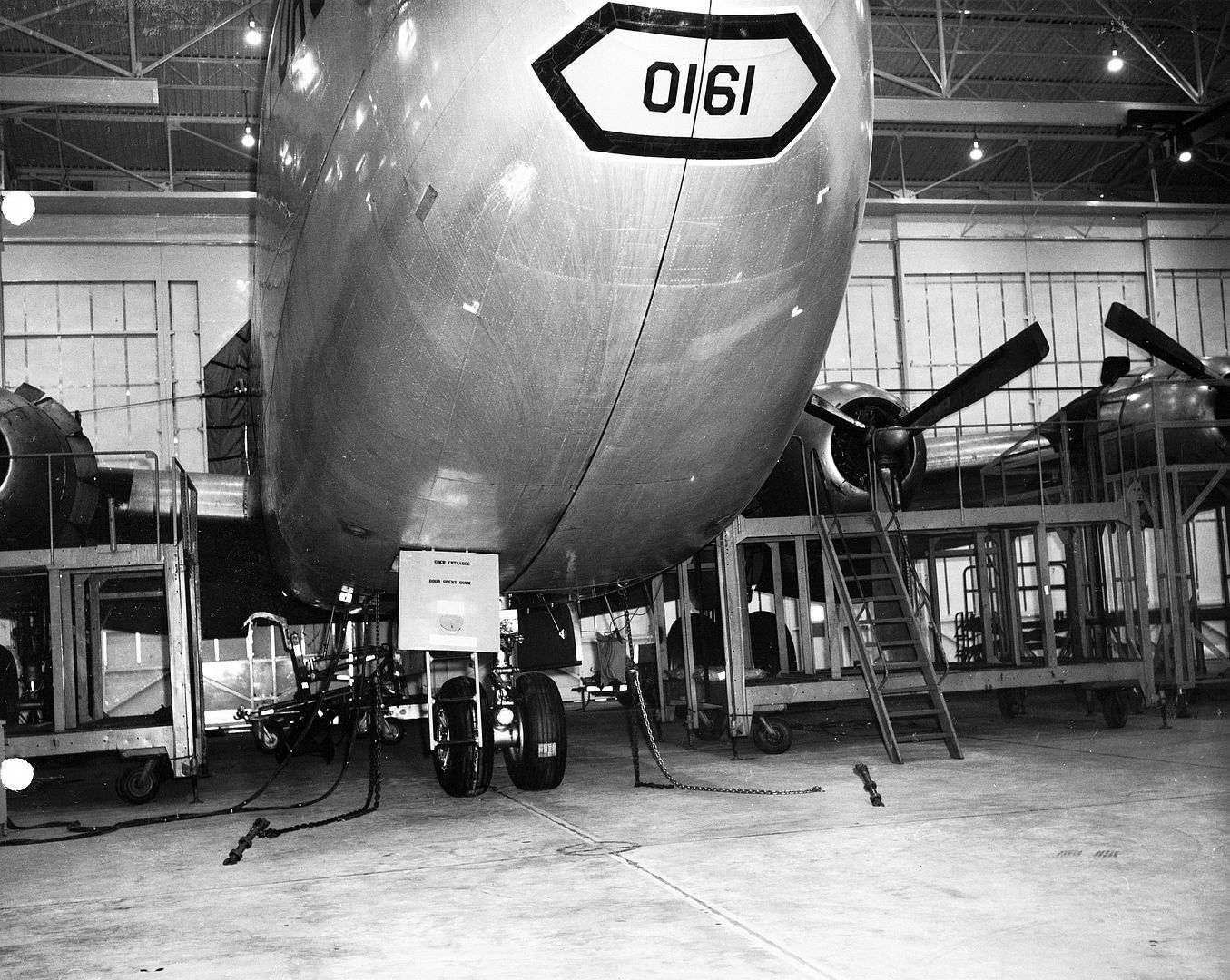
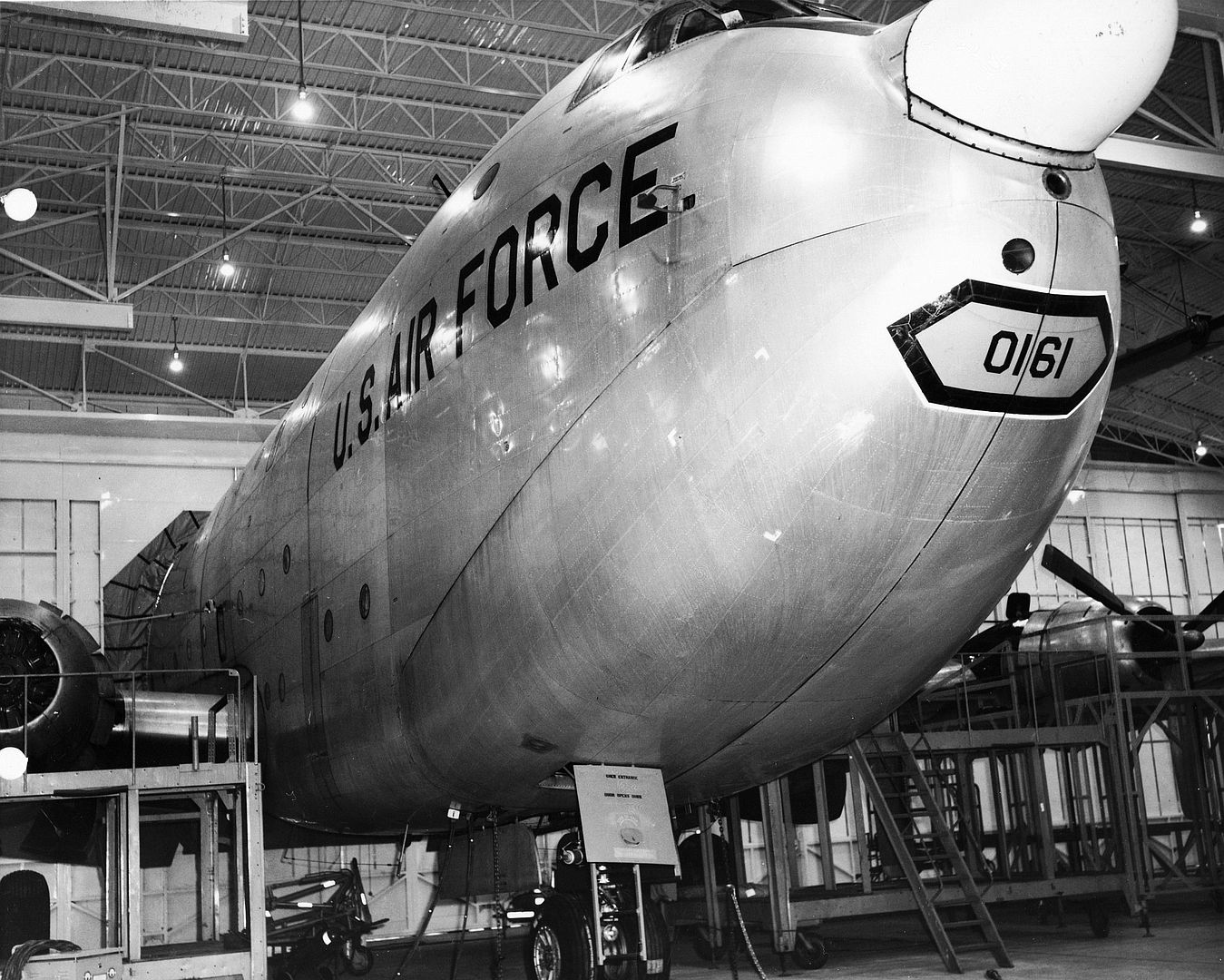
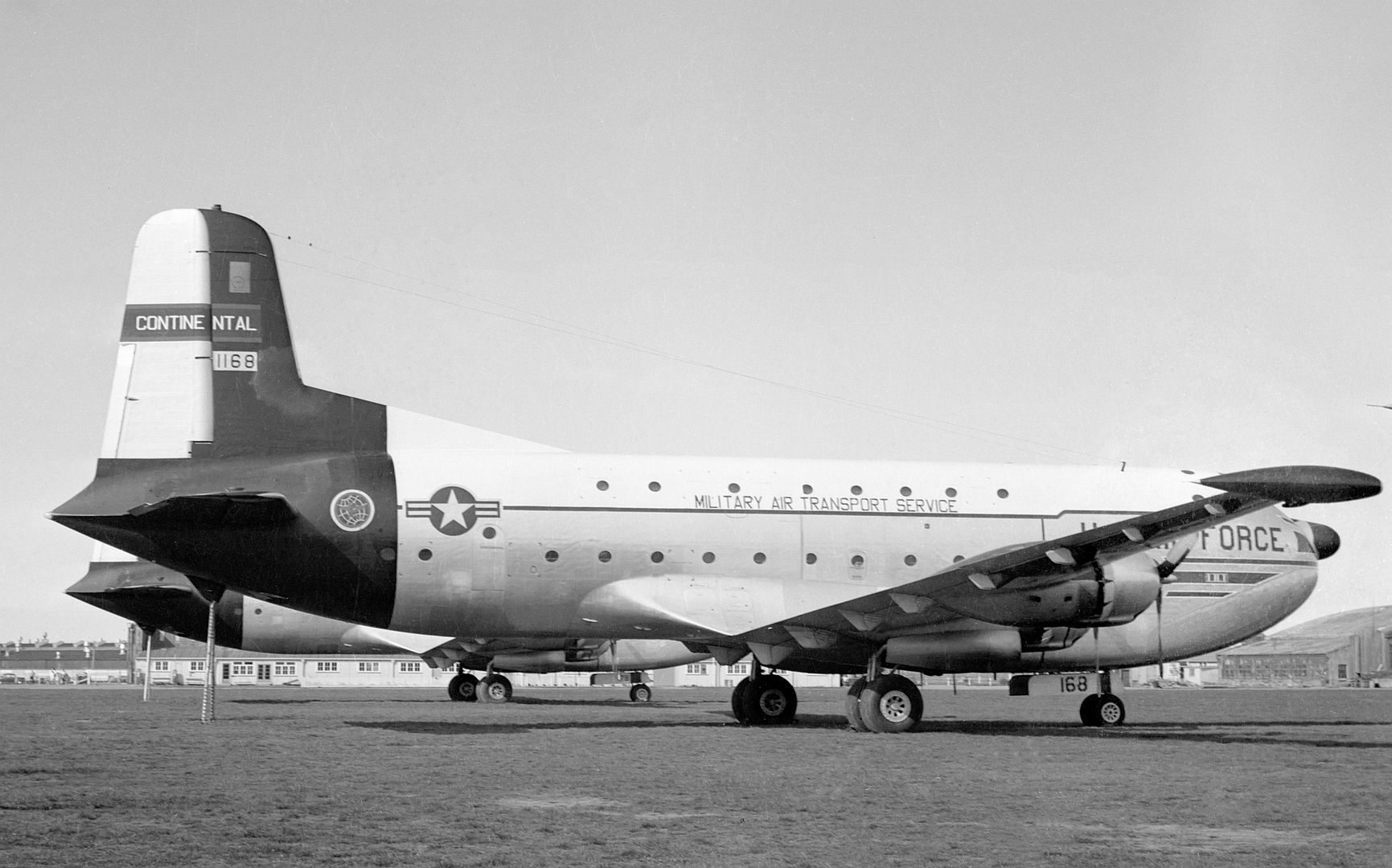
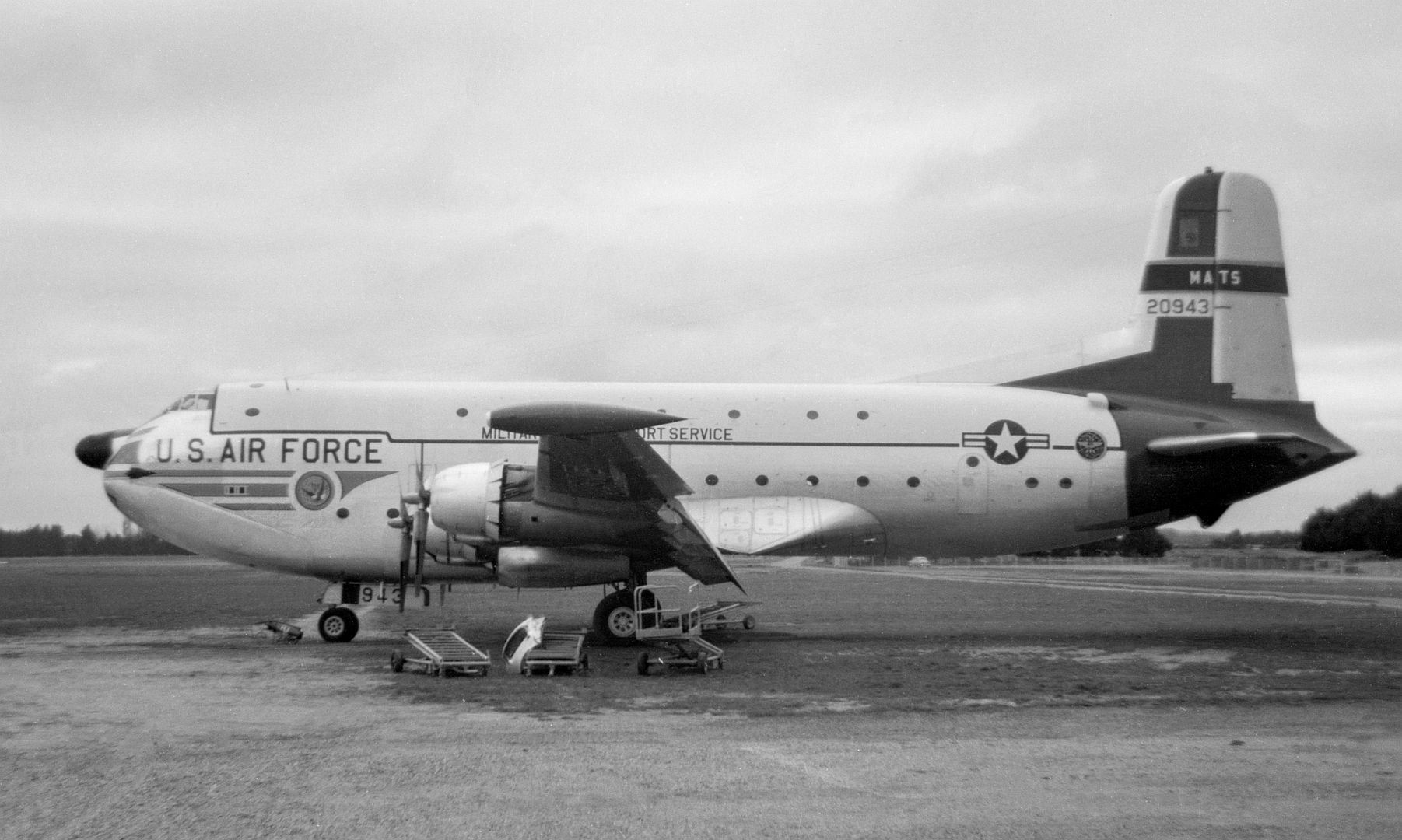
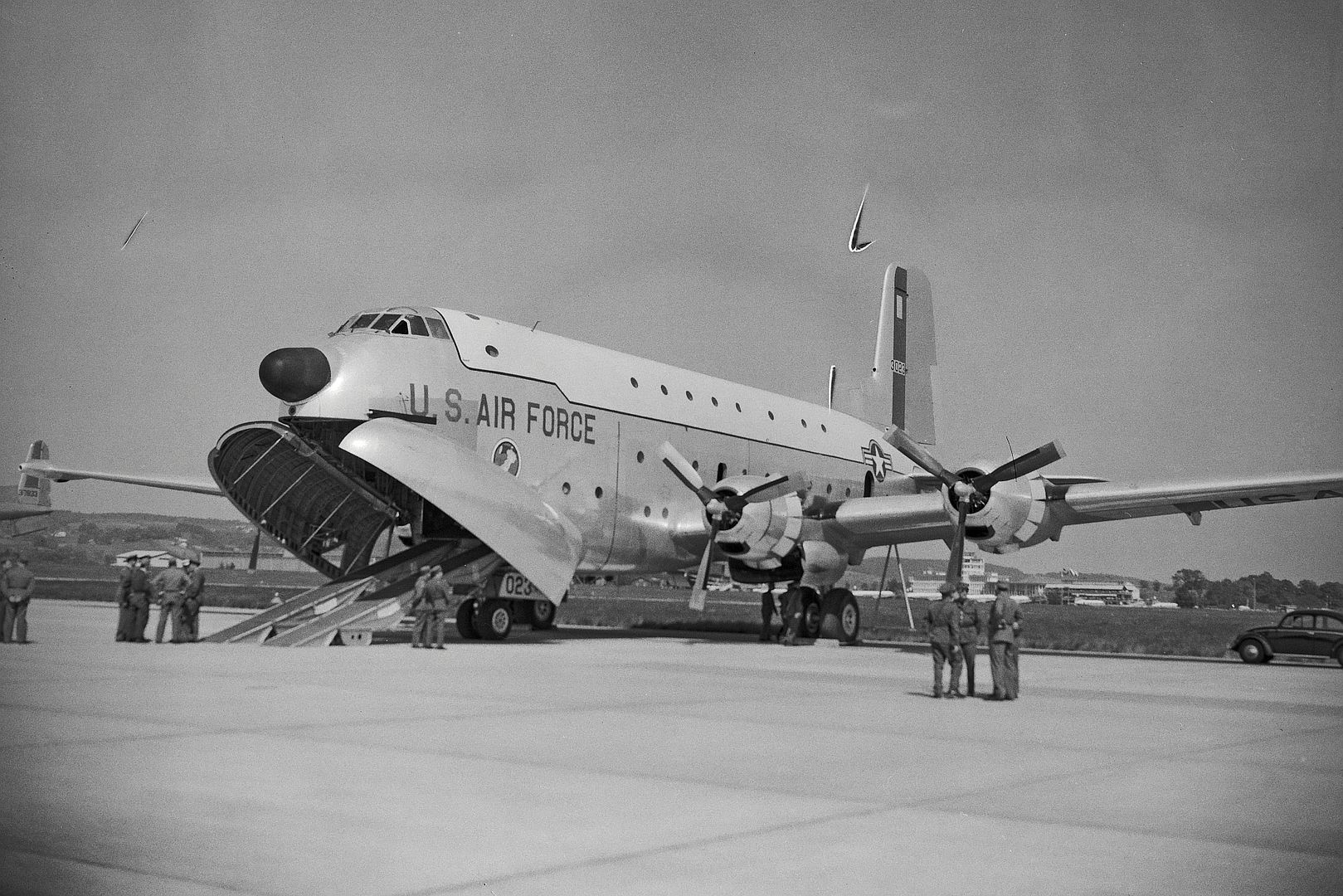
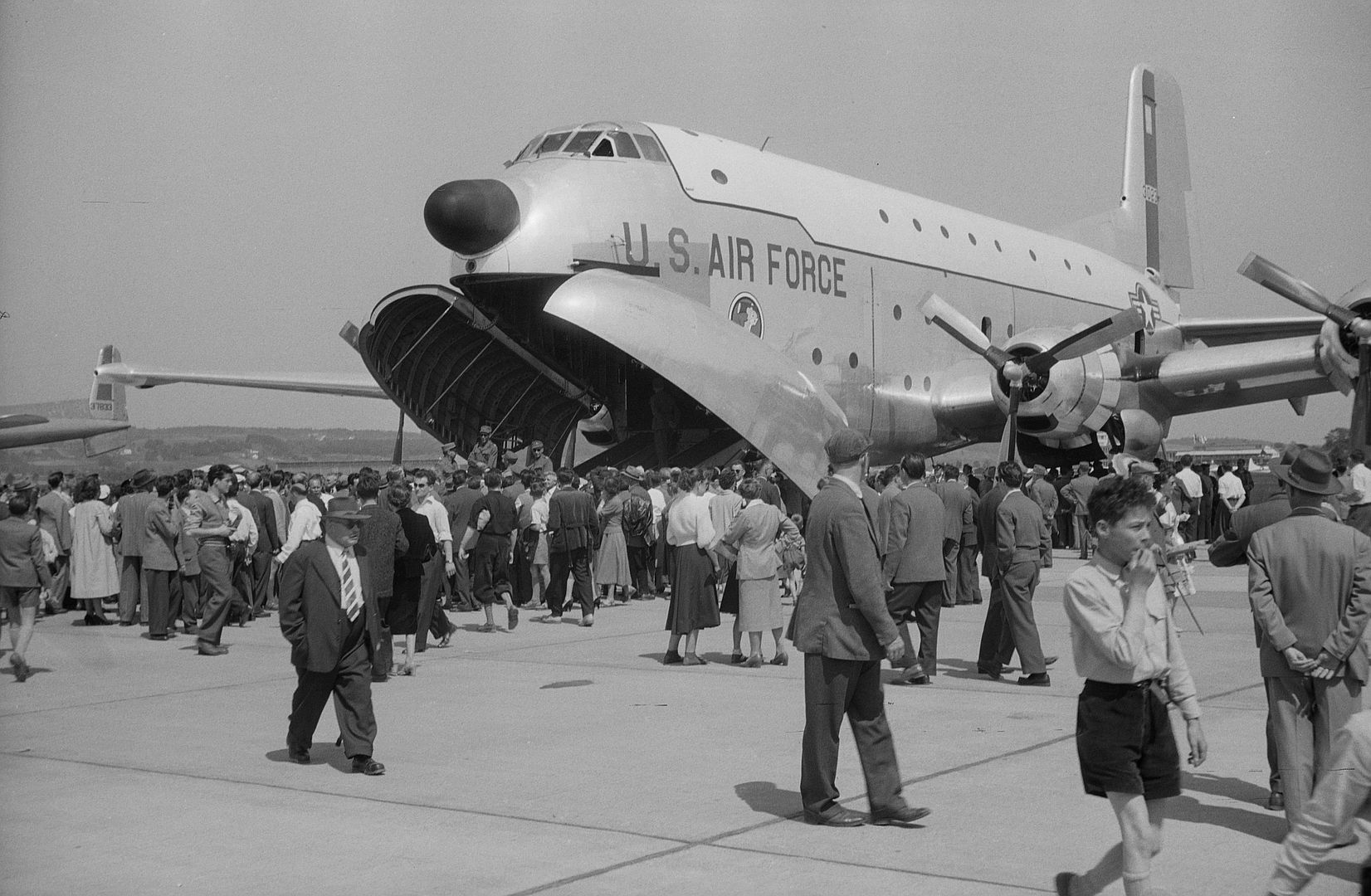
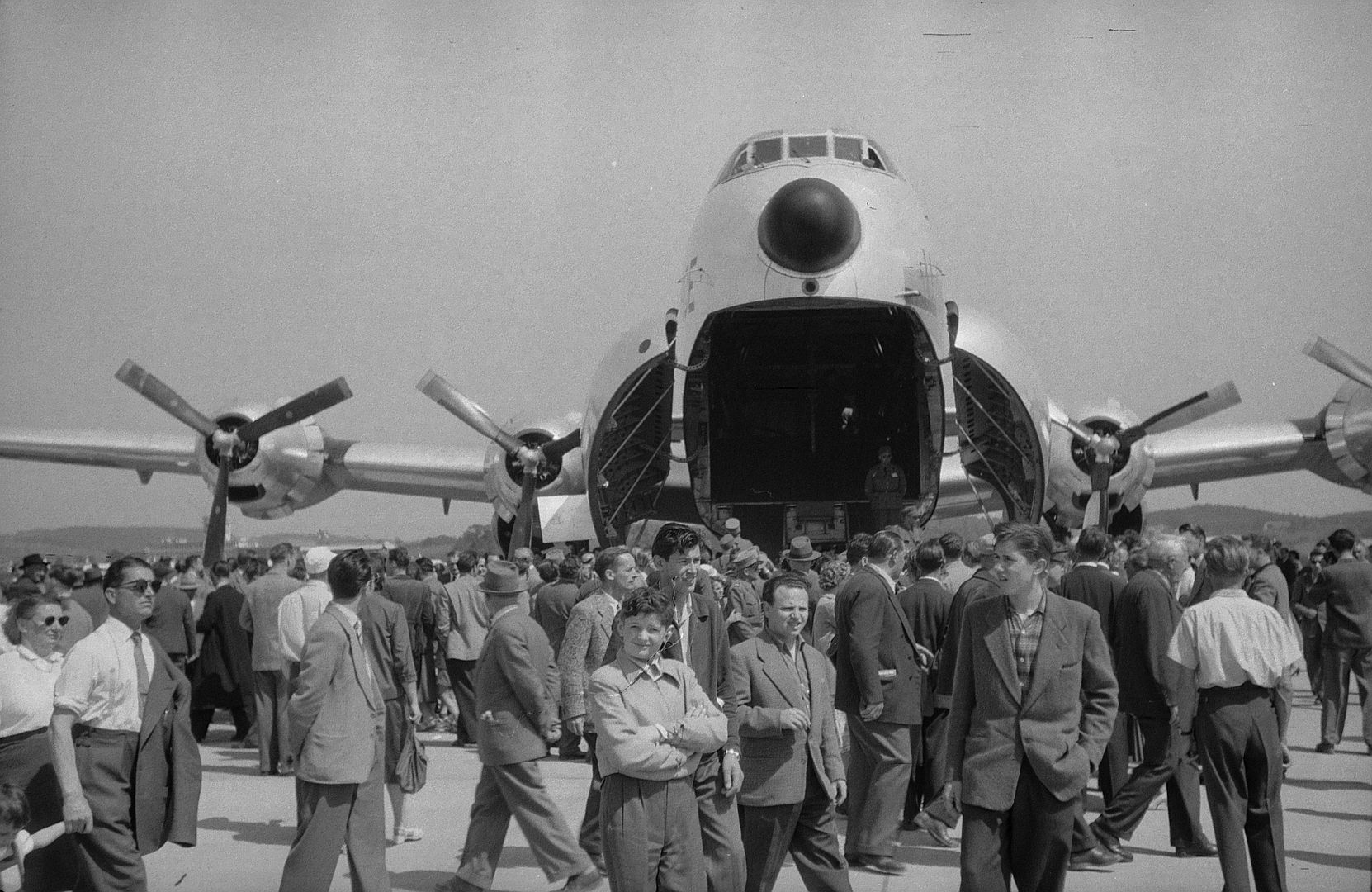
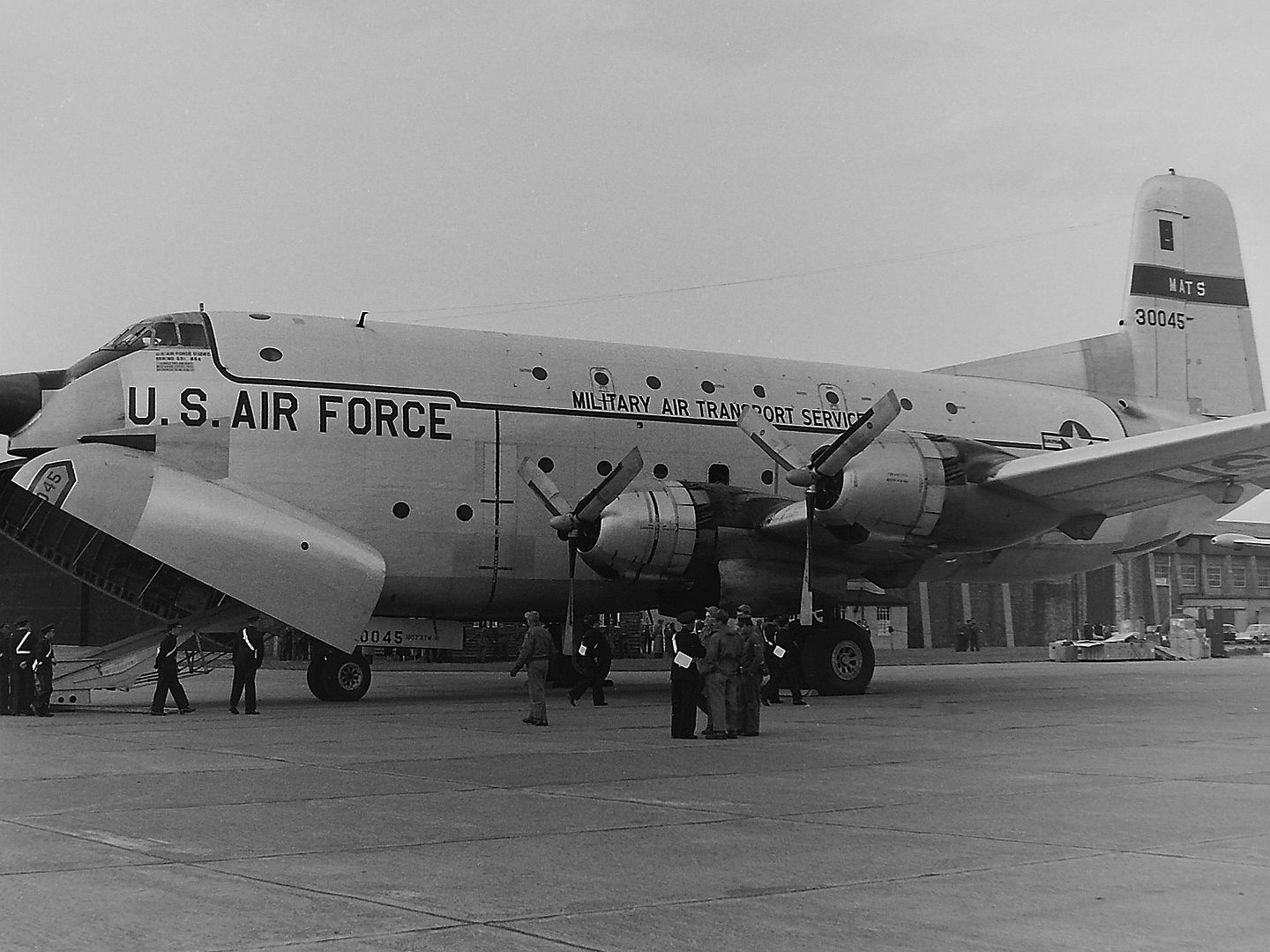
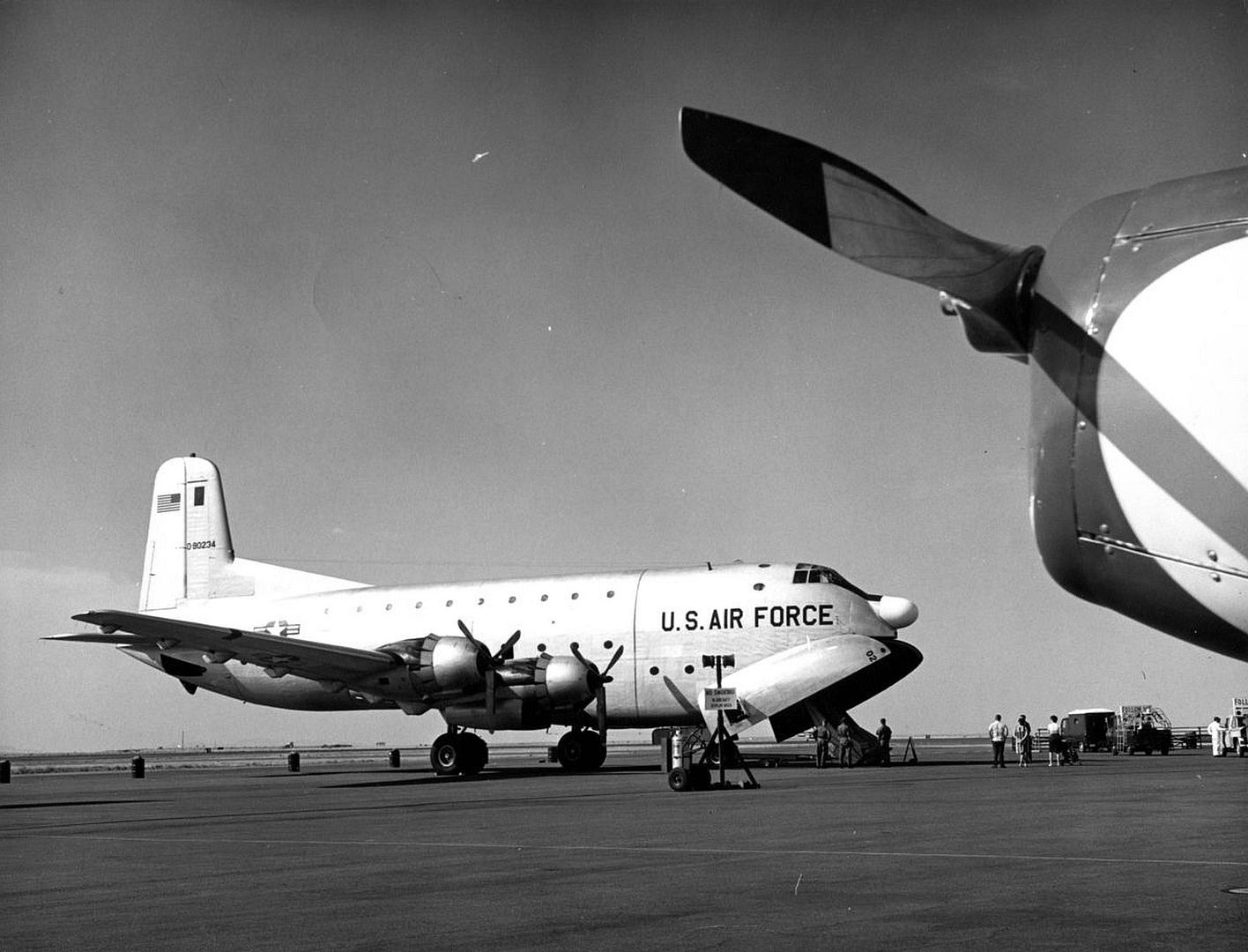
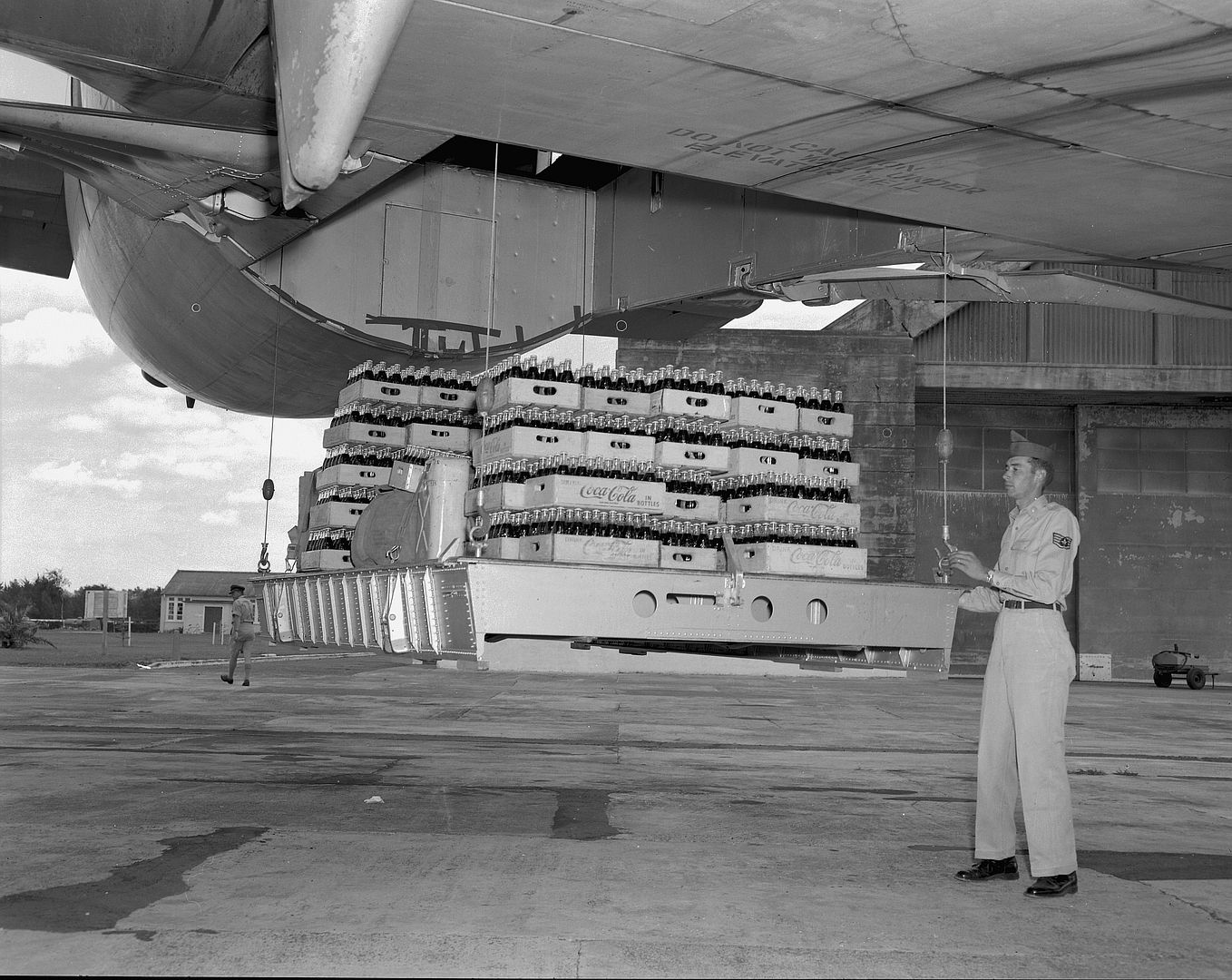
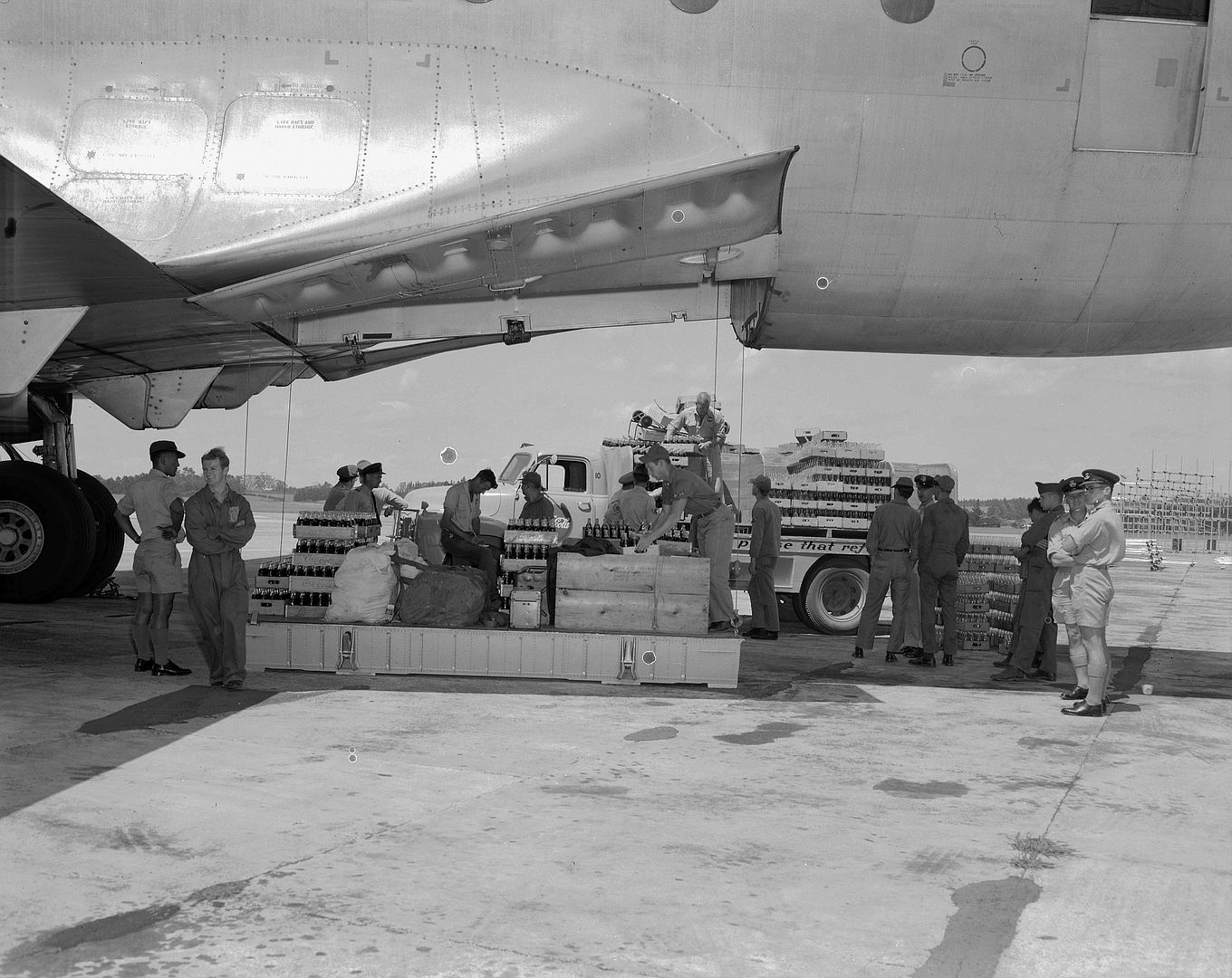
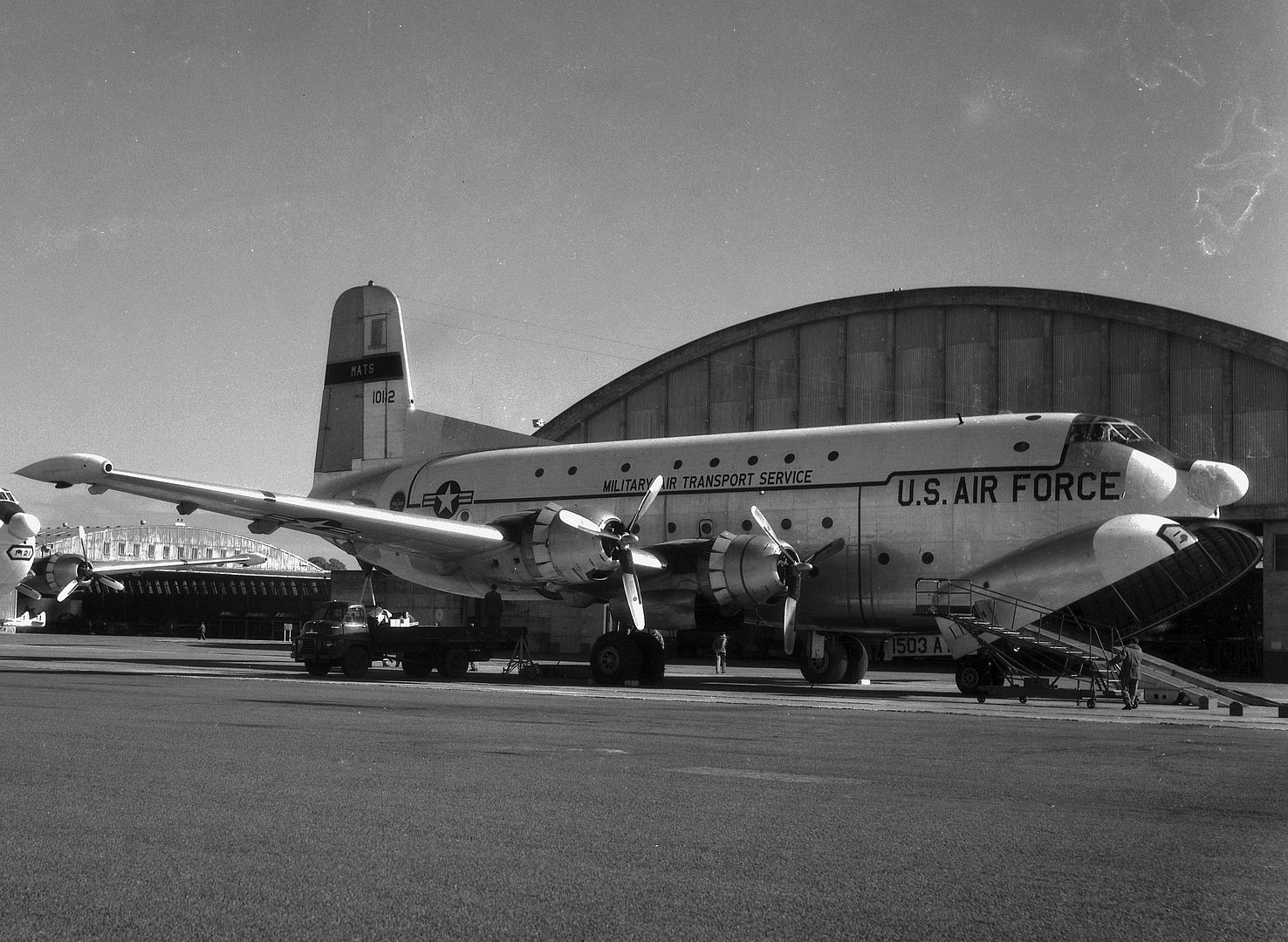
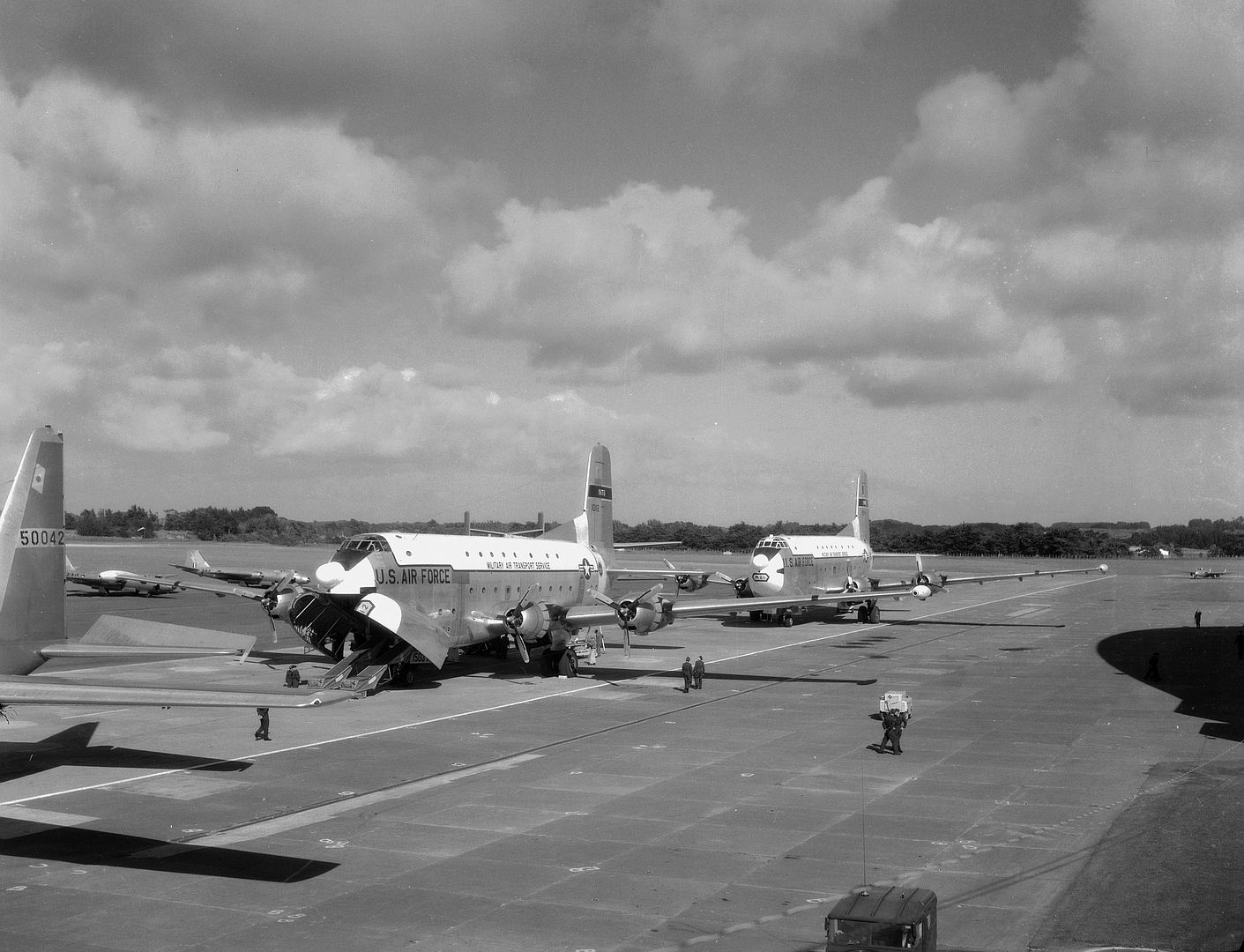

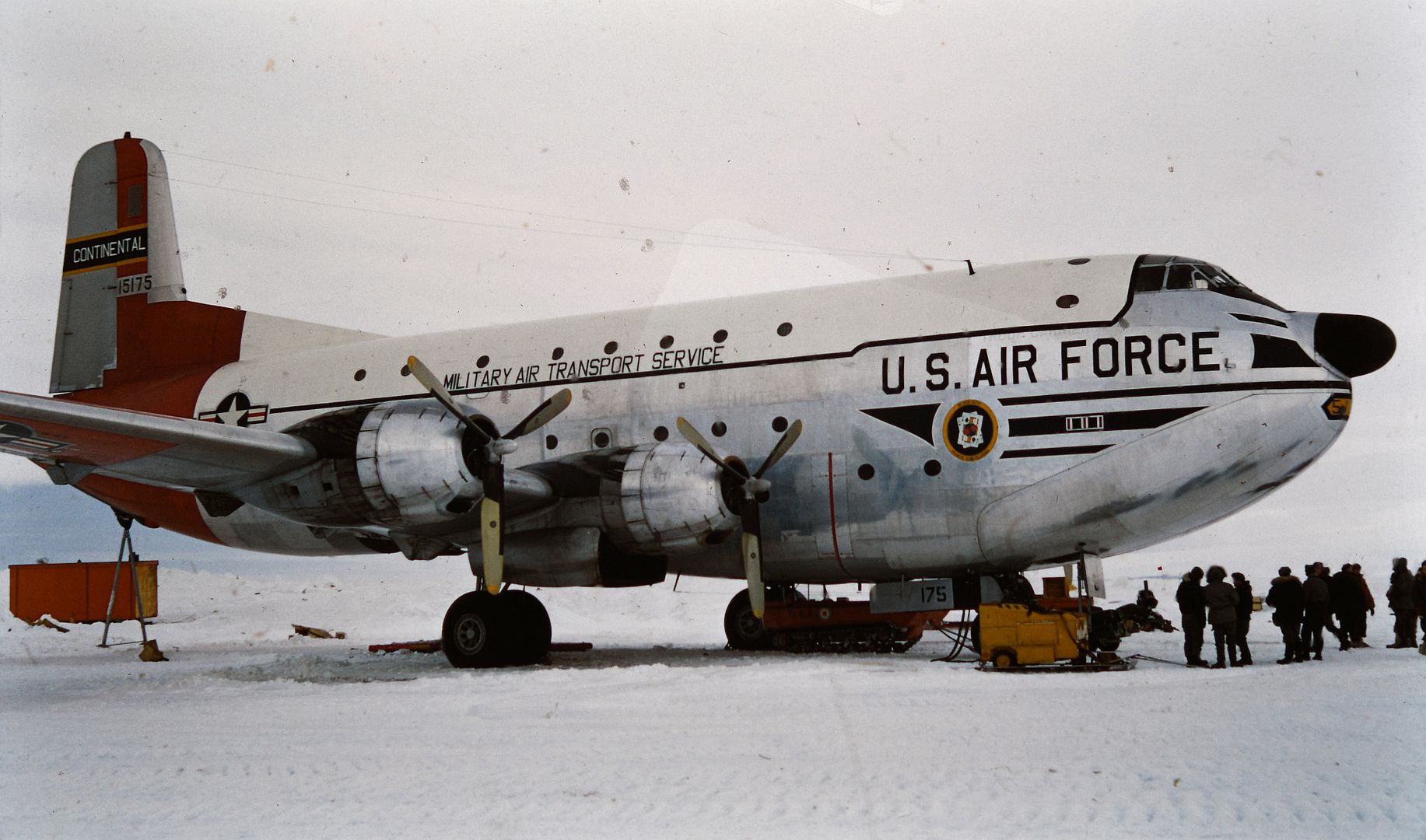
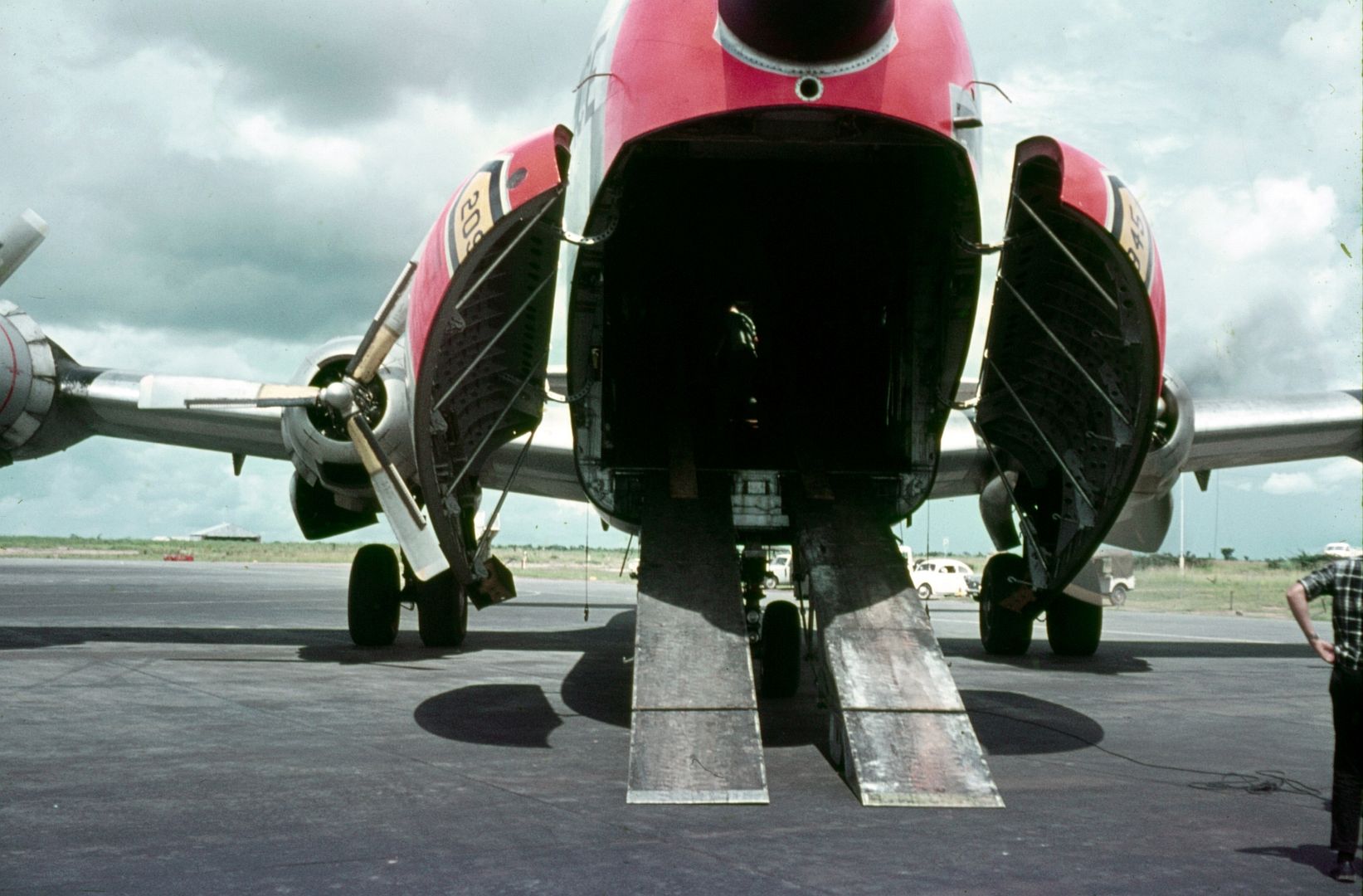

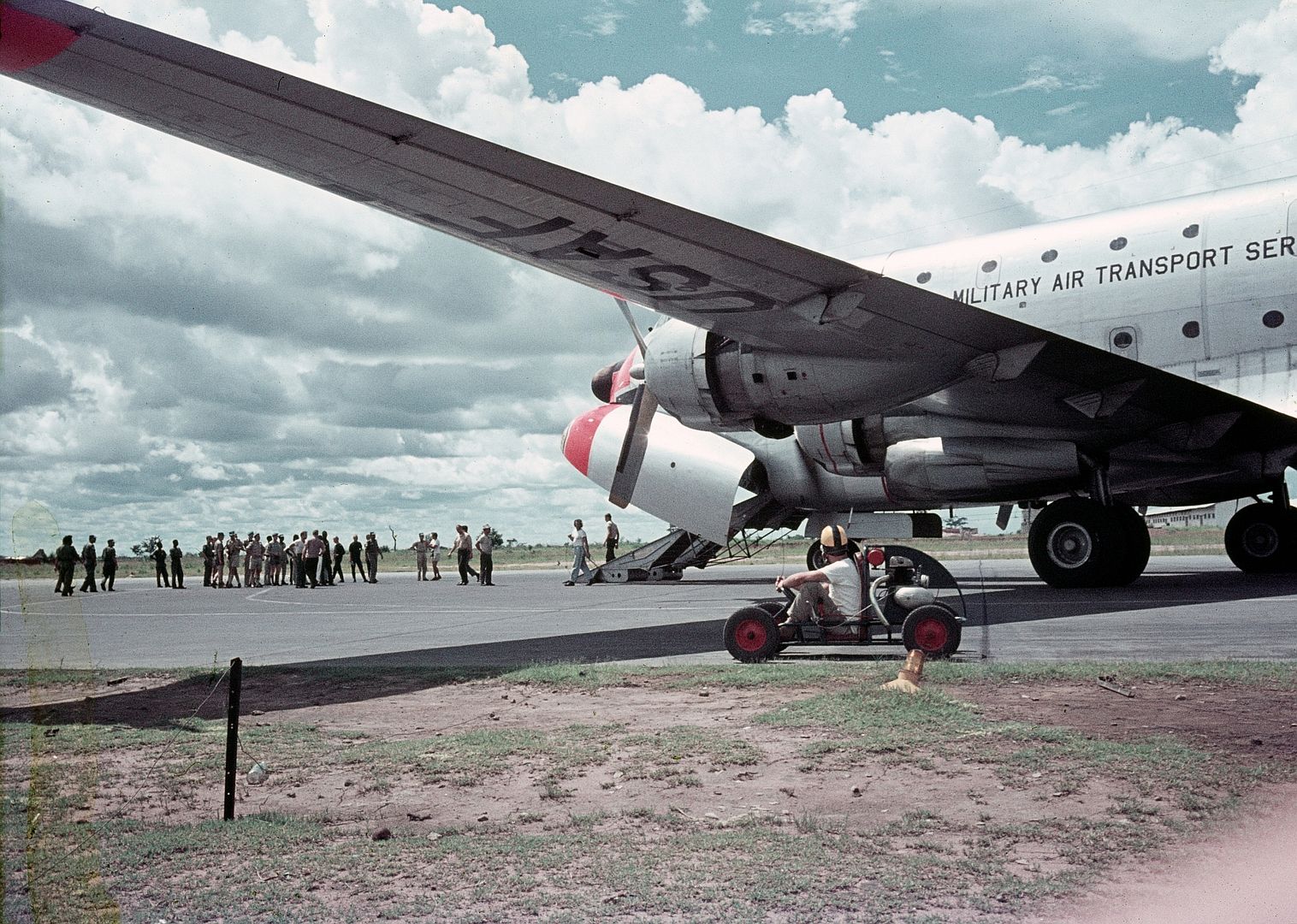
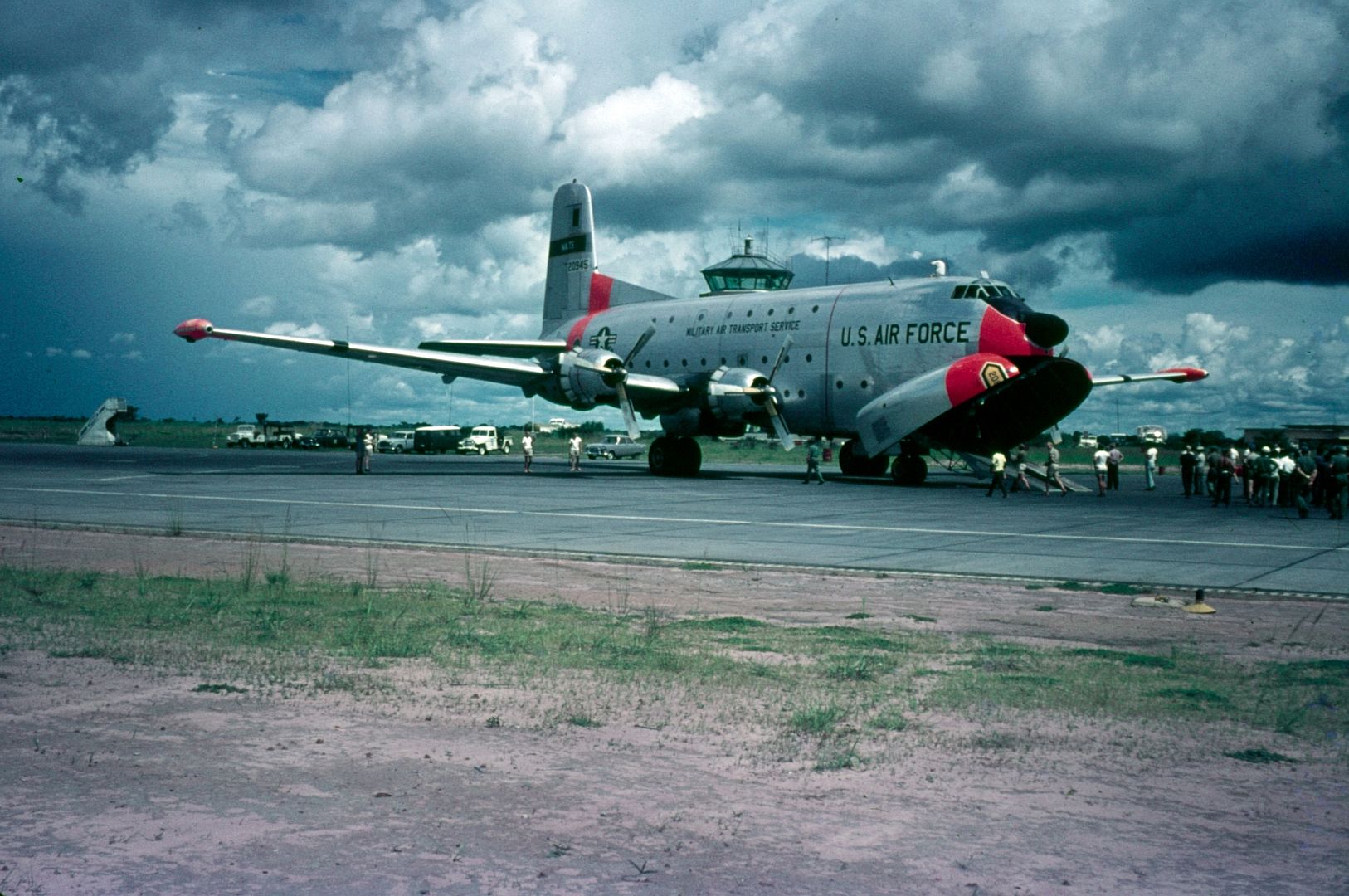

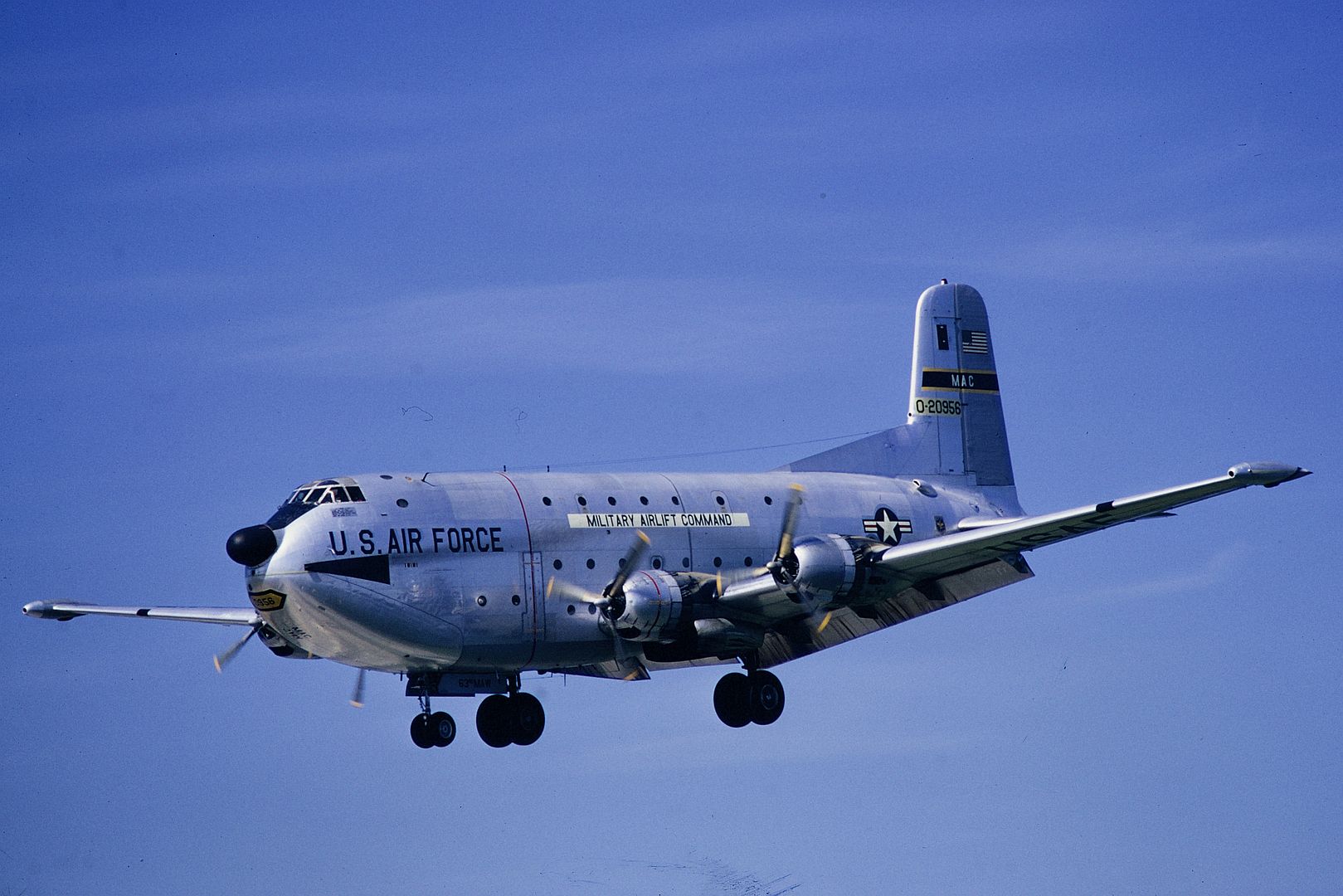
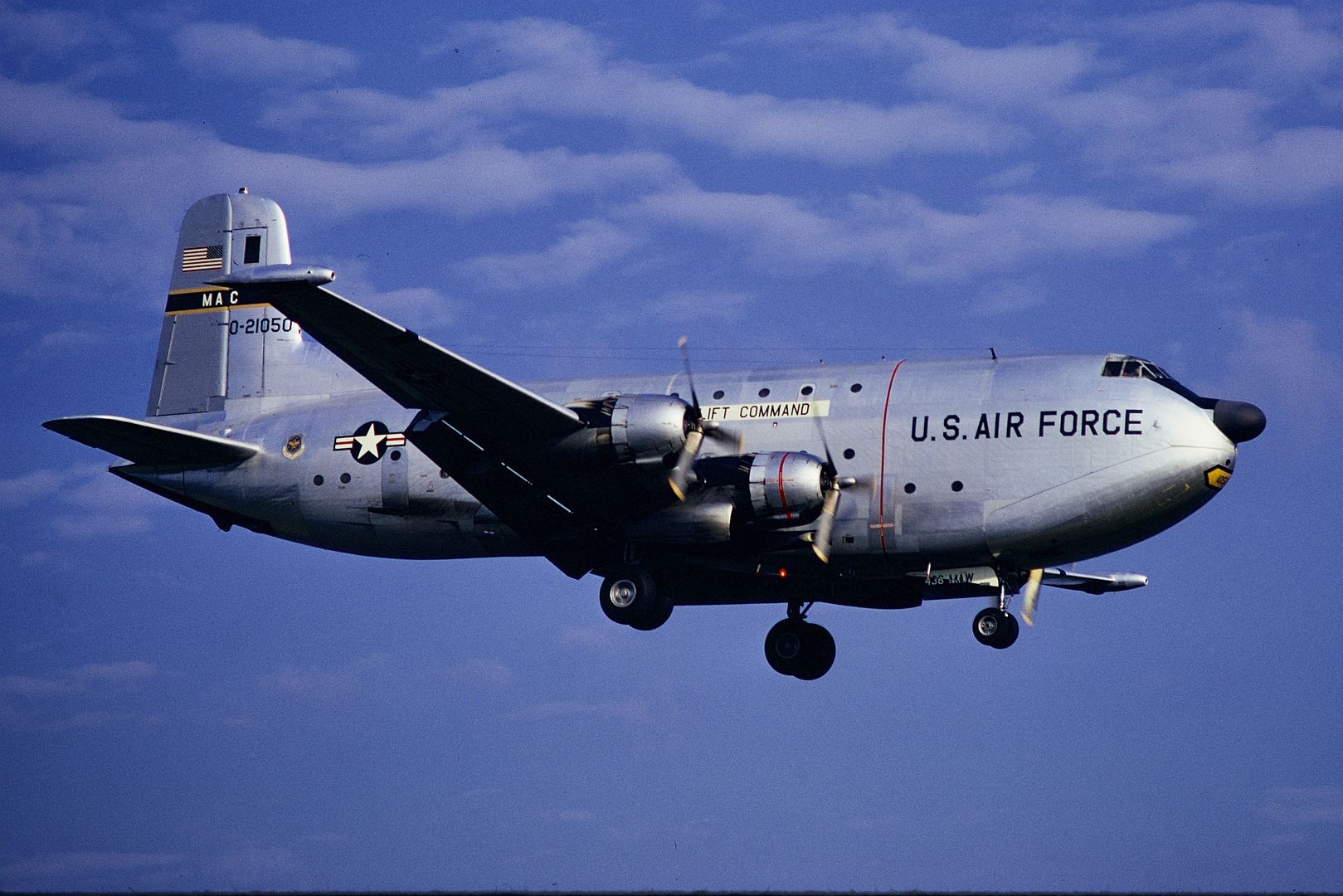

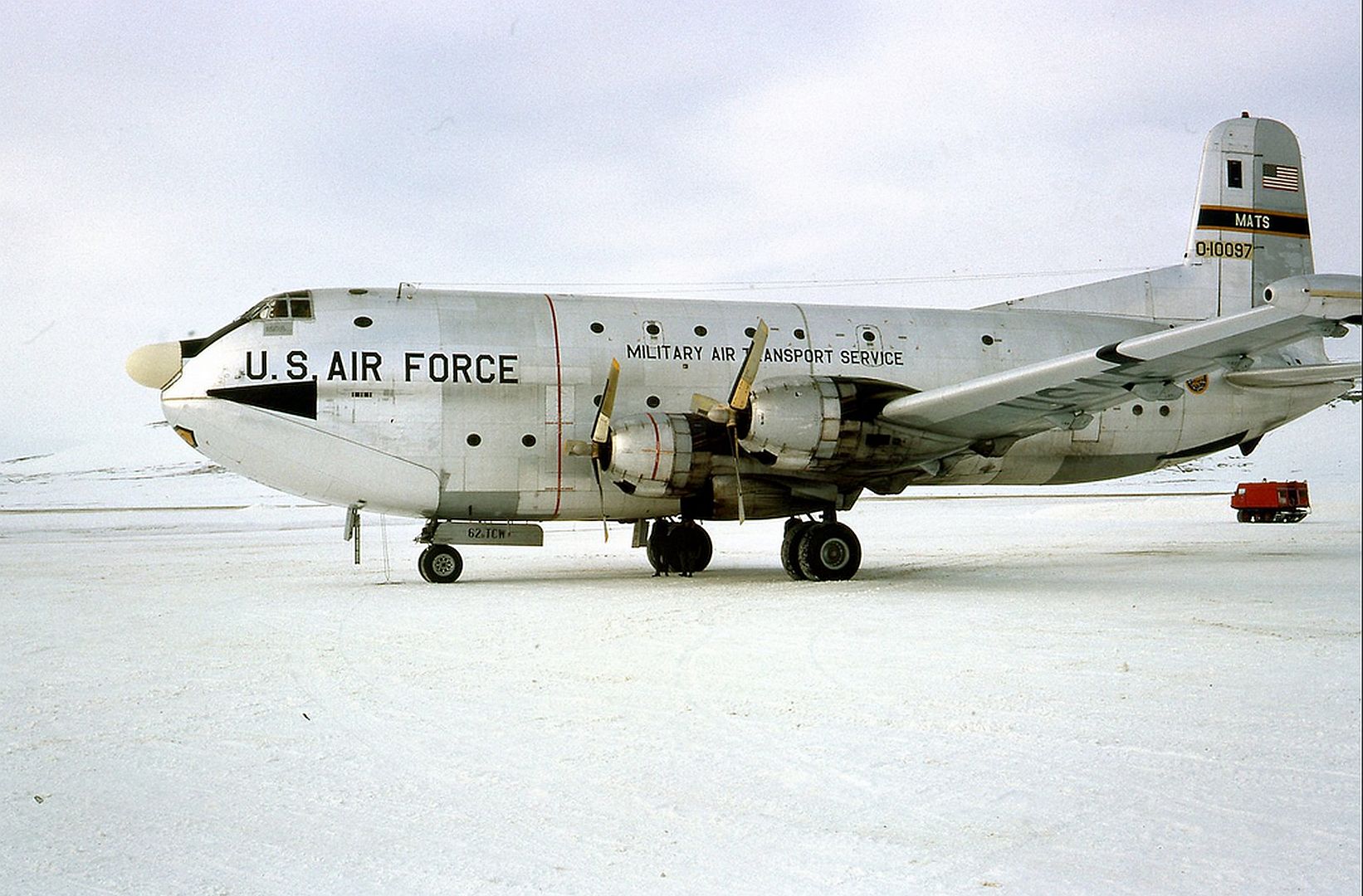
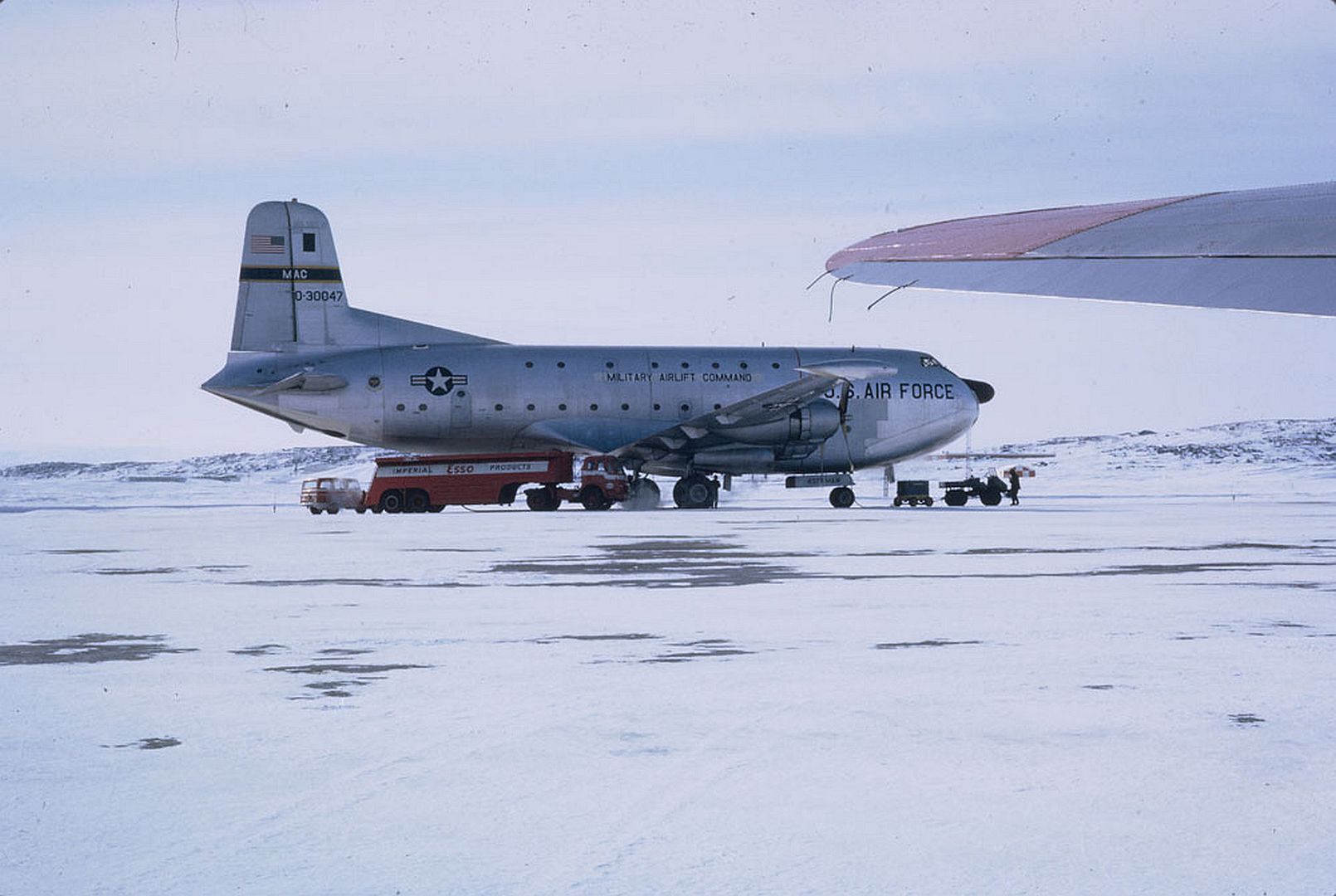

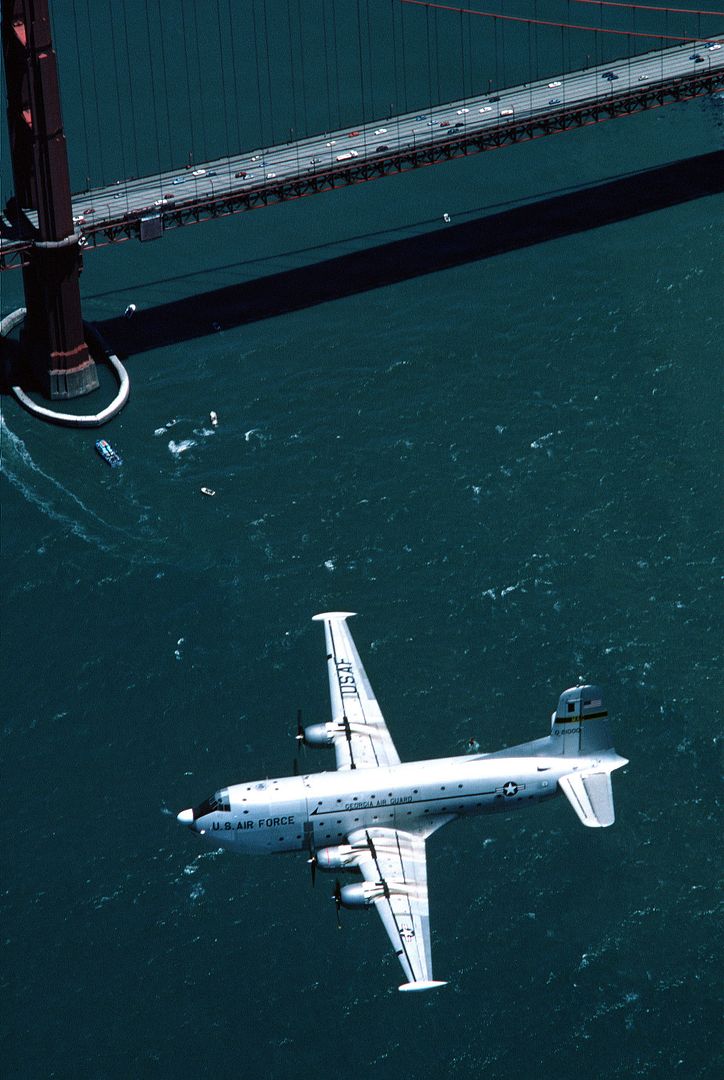
Specifications (C-124C Globemaster II)
General characteristics
Crew: 6 or 7: Aircraft Commander, Pilot, Navigator, Flight Engineer, Radio Operator, 2 Loadmasters
Capacity: 200 troops / 123 litter patients with 45 ambulatory patients and 15 medical staff. Maximum payload 74,000 lb (34,000 kg)
Length: 130 ft 5 in (39.75 m)
Wingspan: 174 ft 1.5 in (53.073 m)
Height: 48 ft 3.5 in (14.719 m)
Wing area: 2,506 sq ft (232.8 m2)
Empty weight: 101,165 lb (45,888 kg)
Gross weight: 185,000 lb (83,915 kg)
Max takeoff weight: 194,500 lb (88,224 kg)
Fuel capacity: 11,128 US gal (42,120 L; 9,266 imp gal) ; 2x 30 US gal (110 L; 25 imp gal) water/alcohol tanks
Powerplant: 4 × Pratt & Whitney R-4360-63A Wasp Major 28-cylinder air-cooled radial piston engines, 3,800 hp (2,800 kW) each with water/alcohol injection
Propellers: 3-bladed Curtiss Model C634S-C402, 16 ft 6 in (5.03 m) diameter fully-feathering reversible-pitch constant-speed propeller
Performance
Maximum speed: 304 mph (489 km/h, 264 kn) at 20,800 ft (6,300 m)
Cruise speed: 230 mph (370 km/h, 200 kn)
Range: 4,030 mi (6,490 km, 3,500 nmi) with 4,030 lb (1,830 kg) payload
Ferry range: 6,820 mi (10,980 km, 5,930 nmi)
Service ceiling: 21,800 ft (6,600 m)
Rate of climb: 760 ft/min (3.9 m/s)
Wing loading: 73.8 lb/sq ft (360 kg/m2)
Power/mass: 0.041 hp/lb (0.067 kW/kg)
(Text from Wikki)
Post a reply
- Go to Previous topic
- Go to Next topic
- Go to Welcome
- Go to Introduce Yourself
- Go to General Discussion
- Go to Screenshots, Images and Videos
- Go to Off topic
- Go to Works in Progress
- Go to Skinning Tips / Tutorials
- Go to Skin Requests
- Go to IJAAF Library
- Go to Luftwaffe Library
- Go to RAF Library
- Go to USAAF / USN Library
- Go to Misc Library
- Go to The Ops Room
- Go to Made in Germany
- Go to Campaigns and Missions
- Go to Works in Progress
- Go to Juri's Air-Raid Shelter
- Go to Campaigns and Missions
- Go to Works in Progress
- Go to Skinpacks
- Go to External Projects Discussion
- Go to Books & Resources
